Authors:
ABSTRACT
Aim
The purpose of the present study was to describe the oral health environment in preschool children and to
examine the extent to which paired twins experience the same oral health environment.
Methods
In
collaboration with The Medical Birth Registry of Norway (MBRN) 100 twin families who participated in the Norwegian Mother
and Child Cohort, were invited to take part in ongoing studies on oral health. Participating twin families lived in Oslo and the
surrounding counties of the capital. The age range of the participating twins was 1-8 years. A clinical examination took place
at The Institute of Clinical Dentistry, University of Oslo in 2008. The oral health environment was measured in two ways: 1)
Interview. Mothers were interviewed by trained interviewers about oral health related habits of each of the twins. 2) Weekend
diet log. Parents listed 84 different deserts, ice cream, sweets, cakes, cookies, fruits, snacks, and biscuits for each twin that
were consumed on during the weekend. The statistical analyses comprised frequency distributions of the environmental
variables and correlations between the variables within the pair of twins.
Results
The results showed a parental
involvement in early tooth brushing and also an indication of tooth brushing not always being easy. Use of fluoride
toothpaste started early, and two thirds of the children also used fluoride tablets. Use of pacifier was prevalent; the duration
of use of pacifier and feeding bottle was relatively long. Nearly 75 of the parents indicated that they had no problems
relatively to the twins' meals, and 53 mentioned that the twin pairs were different with regard to meals. Nearly
70 of the kindergartens had a clear health profile. The correlations varied between r 0.45 and 1.00.
Conclusion
The children in the present work were young, and the detailed information in this paper therefore adds to the
knowledge of parental involvement in children's oral health. Generally the findings indicate a high level of involvement from
the parents in the oral health environment at home. Altogether the results showed that the assumption of identical oral health
environment cannot be supported by these data.
PLUMX METRICS
Publication date:
Keywords:
Issue:
Vol.13 – n.1/2012
Page:
Publisher:
Cite:
Harvard: D. Holst, J. A. Aas (2012) "The oral health environment and the equal environment assumption (EEA) among 1-8-year-old twins", European Journal of Paediatric Dentistry, 13(1), pp41-45. doi:
Copyright (c) 2021 Ariesdue

This work is licensed under a Creative Commons Attribution-NonCommercial 4.0 International License.
